Setting Up IC-2730 for LEO Satellites
Setting Up IC-2730 for LEO Satellites
IC-2730 is a dual band VHF/UHF Amateur Radio with two VFOs and hence useful for amateur radio satellite operations as a full duplex radio. It has only one antenna port which is an SO 239 connector. Hence if you want to connect two separate antennas for VHF and UHF, you need a diplexer. As I am not having a diplexer which can be used for a base station, I am using my CP22E vertical antenna both for RX and TX. I am going by the principle that a VHF amateur radio antenna can resonate also on UHF, being a third harmonic (odd harmonic), though with sub optimal performance. I am illustrating the setting up of the radio here for the benefit of those who are planning to start LEO (Low Earth Orbit) amateur radio satellite operation.

Demonstration is for the voice transponder at the International Space Station, which is the easiest to work for a new comer as it has a power output of 5 watts, unlike most other LEO satellites which have only a few hundred milliwatts of output. Doppler tuning and finding of the satellite passes have been discussed earlier and I use the Argentinian Amsat web page. This image shows the nominal frequencies of uplink set in the left sided VFO and downlink being set in the right VFO.

Left VFO on 145.990 MHz is set as the main band by pressing the button labelled ‘MAIN BAND’ on the left side. Main band will be the TX VFO. If you press ‘MAIN BAND’ on the other side, UHF will become the TX VFO and you can use it for U/V satellites. As the international space station has uplink on VHF and downlink on UHF, it is a V/U satellite. Hence VHF is set as main band for TX and UHF as RX (437.800 MHz). Tuning on each side is done using the rotary ‘DIAL’ knob. Pressing the V/MHz button enables changing MHz part of the frequency for faster tuning. Pressing the button once again will allow fine tuning.
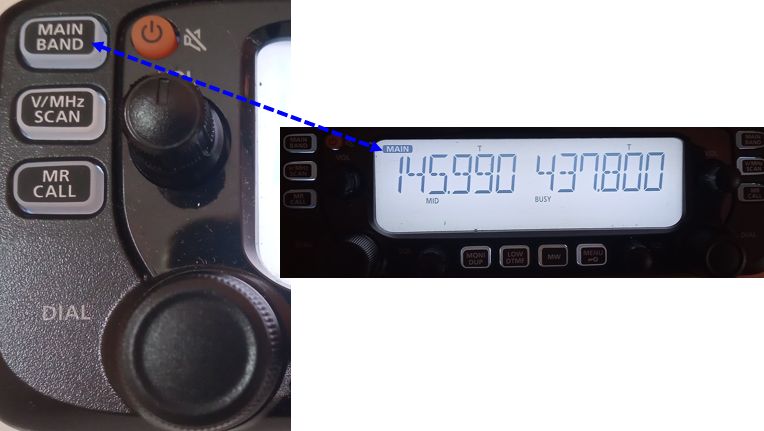
While waiting for a pass of international space station, the intial frequencies are set as follows: 145.985 MHz for uplink and 437.810 MHz for downlink. Every two or three minutes the downlink frequency will have to be stepped down by 5 kHz. Uplink frequency will have to be moved up less often, as per the display on the Argentinian Amsat web page. When the satellite is at its nearest position (TCA: Time of Closest Approach), usually the nominal frequencies will be reached and beyond that the downlink frequency will be below and uplink frequency above that.
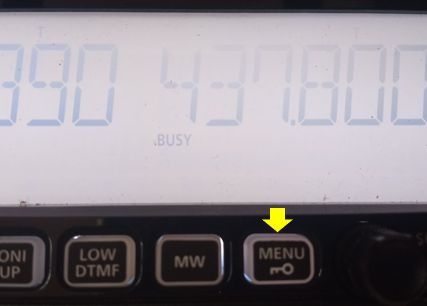
CTCSS tone of 67 Hz has to be programmed on the uplink to access the voice transponder of international space station. This is done using the ‘MENU’ button below the display.
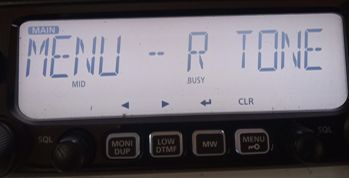
In the MENU, you can choose R TONE to send a tone along with the transmitted signal.
If you press the ‘MW’ button, corresponding to the return symbol on the display, it moves to the ‘RTONE’ menu and you can see that 67 Hz has been chosen here. Usually the default is 88.5 Hz in IC-2730 and I have changed it to 67 Hz by turning the ‘DIAL’ knob. Once the tone has been set, ‘T’ appears above the frequency in the display.
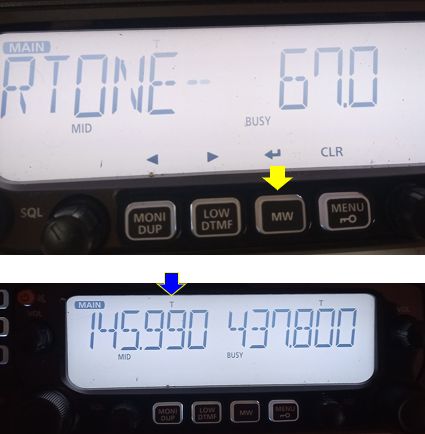
There is also a ‘C TONE’ in the menu, which you will NOT program. It is a tone squelch and if it is programmed, the squelch will not open until a similar tone is received. ‘TSQL’ is the indicator for tone squelch.
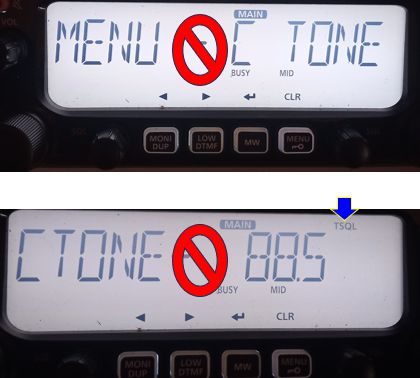
While setting for international space station, I usually keep the volume on the VHF side zero by turning the VOL knob counterclockwise fully. The ‘MUTE’ option of short press of the power button is NOT to be used for muting the RX VFO.
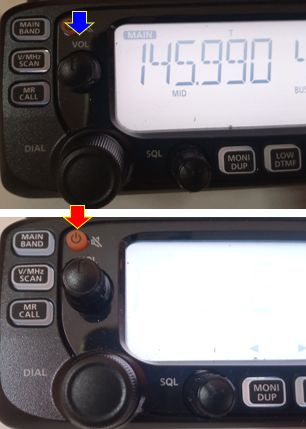
On the UHF side, the squelch is kept fully open by turning it in the counterclockwise direction so as to receive weak signals from the satellite. Satellite signals are often not strong enough to open the squelch like a local repeater signal. As there will be a continuous hissing noise when the squelch is open, the volume knob can be turned either clockwise or counterclockwise, to have a comfortable level for hearing. When the satellite signals are received, the hissing noise suddenly disappears and you can listen to the beacon on CW as NA1SS or hear the calls of any station who is calling.
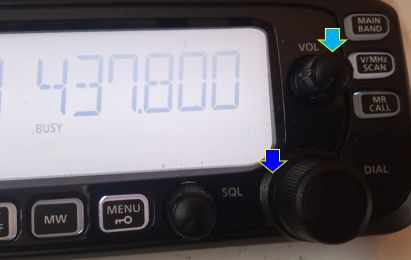
It may not be as clear as you hear someone on a local repeater, though some high end ground stations will have very good signals coming through the downlink. The signal fades fast as the satellite moves and you have to tune down the frequency for Doppler correction to continue receiving the signal. If you have been adjusting uplink frequency also as per the display on the Argentinian Amsat website, you can call back as soon as you receive a call on the downlink. It is a little bit of trial and error in tuning as there could be slight variations as IC-2730 has only minimum 5 kHz tuning step, while the website displays 0.01 kHz steps!
When your uplink is being received by the international space station, you may see the S meter on the downlink VFO showing the signal. But I have not been able to hear my downlink clearly, probably my ear cannot pick up the downlink well when I am speaking into the microphone. Still I have been able to have a few QSOs through international space station and other LEO satellites with my limited setup.
Ideal would be to have cross Yagi antennas for VHF and UHF, connected through a diplexer to IC-2730. That would also mandate the use of an azimuth-elevation antenna rotator. Some have had limited success by using Yagi antennas in fixed positions as well. I have been able to receive international space station well with my 5 element UHF Yagi in a fixed position once.
